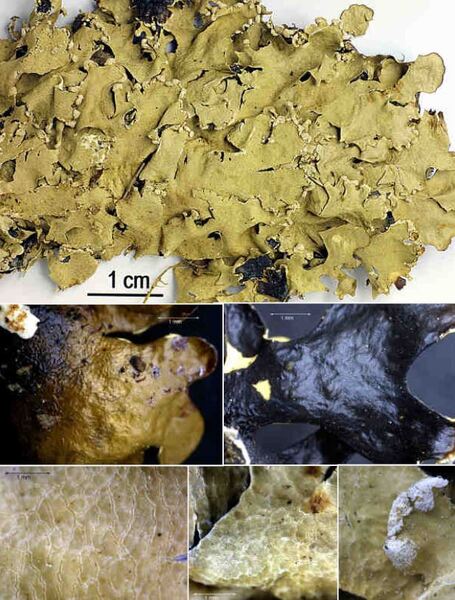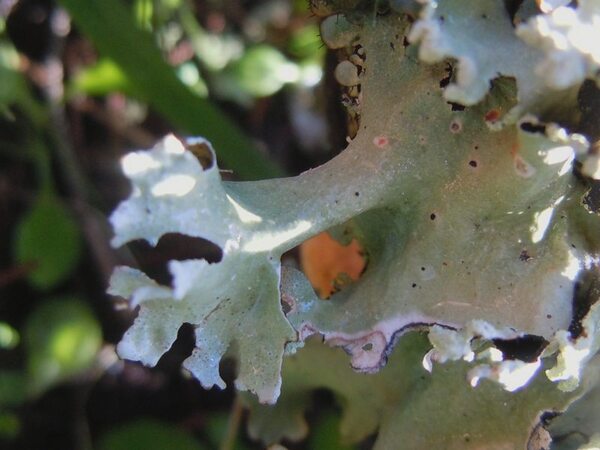Parmotrema pseudoreticulatum (Tav.) Hale
Phytologia, 28, 4: 338, 1974. Basionym: Parmelia pseudoreticulata Tav. - Portugaliae Acta Biol., Sér. B, 1: 138, 1945
Synonyms:
Distribution:
Description: Thallus foliose, heteromerous, dorsiventral, broad-lobed, loosely attached, 4-10(-20) cm in diam, sorediate. Lobes elongate, slightly overlapping, 4-12 mm wide, crenate at margins, rounded and sometimes subascending at apices, the margins usually thickened, with black, simple, up to 0.5 mm long cilia or often eciliate. Upper surface pale grey to grey-green, smooth, dull, weakly reticulately maculate (especially in marginal parts), with mostly laminal, more rarely marginal, mostly labriform soralia which never arise on tiny erect lobules. Lower surface black, with a brown, up to 5 mm wide, erhizinate marginal zone, centrally with mostly simple, up to 1 mm long, black rhizines. Upper cortex of tightly packed, anticlinally oriented hyphae, with a pored epicortex, the cell walls with lichenan intermediate between the Cetraria- and the Xanthoparmelia-types; medulla white; algal layer continuous; lower cortex prosoplectenchymatous, with rounded and thick-walled cells. Pycnidia submarginal, conspicuous, the ostiole black. Conidia filiform, 8-14 x c. 1 μm. Photobiont chlorococcoid. Spot tests: upper cortex K+ yellow, C-, KC-, P- ot P+ faintly yellow; medulla K+ yellow turning orange-red, C-, KC- or KC+ red, P+ orange-red, UV-. Chemistry: upper cortex with atranorin and chloroatranorin; medulla with salazinic acid (major) and consalazinic acid (minor), protocetraric acid (trace). Note: for a long time considered as a synonym of P. reticulatum, this cryptic species is genetically different, while the morphological differences are few and slight, often not sufficient for a correct identification (Divakar & al. 2005, Del Prado & al. 2016). It grows on more or less coastal shrubs not far from the coast, and is known from Morocco, Portugal, Spain (including the Balearic Islands) and the British Isles; its presence in Mediterranean Italy is likely.
Growth form: Foliose, broad lobed
Substrata: bark
Photobiont: green algae other than Trentepohlia
Reproductive strategy: mainly asexual, by soredia, or soredia-like structures (e.g. blastidia)
Most common in areas with a humid-warm climate (e.g. most of Tyrrenian Italy)
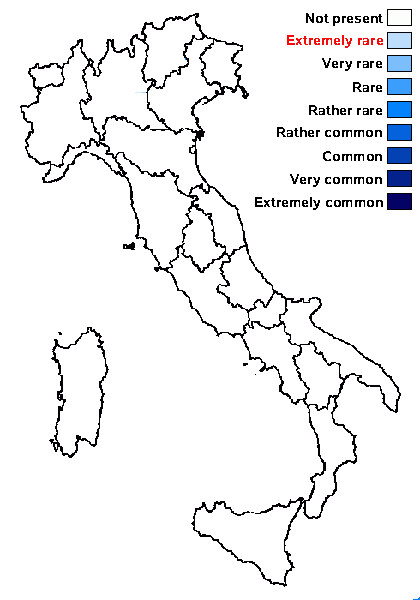
Predictive model
Herbarium samples
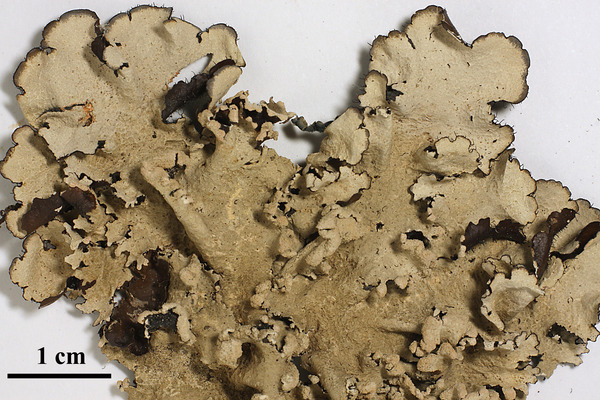

Felix Schumm - CC BY-SA 4.0
[10196], Spanien, Kanarischen Inseln, La Gomera, westlich von San Sebastian nicht weit vor der Abzweigung nach Playa Santiago, 28°05.744' N, 17°10.290' W, 840 m. Basaltblöcke in einem reich mit Kleinia bewachsenen SO-Abhanges, licht-, wind-, nebeloffen. Leg. Schumm 17.04.2003, det. Schumm 06.2004.


Felix Schumm - CC BY-SA 4.0
[10196], Spanien, Kanarischen Inseln, La Gomera, westlich von San Sebastian nicht weit vor der Abzweigung nach Playa Santiago, 28°05.744' N, 17°10.290' W, 840 m. Basaltblöcke in einem reich mit Kleinia bewachsenen SO-Abhanges, licht-, wind-, nebeloffen. Leg. Schumm 17.04.2003, det. Schumm 06.2004.
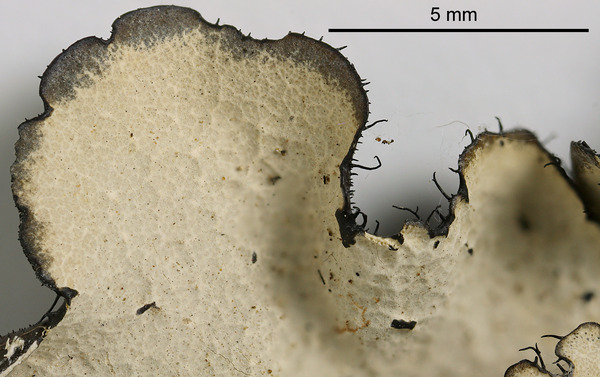

Felix Schumm - CC BY-SA 4.0
[10196], Spanien, Kanarischen Inseln, La Gomera, westlich von San Sebastian nicht weit vor der Abzweigung nach Playa Santiago, 28°05.744' N, 17°10.290' W, 840 m. Basaltblöcke in einem reich mit Kleinia bewachsenen SO-Abhanges, licht-, wind-, nebeloffen. Leg. Schumm 17.04.2003, det. Schumm 06.2004.


Felix Schumm - CC BY-SA 4.0
[10196], Spanien, Kanarischen Inseln, La Gomera, westlich von San Sebastian nicht weit vor der Abzweigung nach Playa Santiago, 28°05.744' N, 17°10.290' W, 840 m. Basaltblöcke in einem reich mit Kleinia bewachsenen SO-Abhanges, licht-, wind-, nebeloffen. Leg. Schumm 17.04.2003, det. Schumm 06.2004.
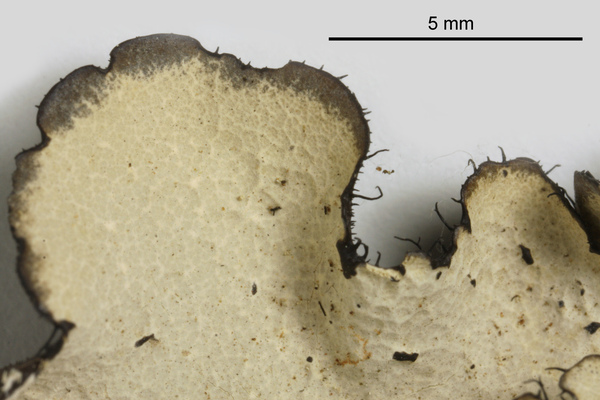

Felix Schumm - CC BY-SA 4.0
[10196], Spanien, Kanarischen Inseln, La Gomera, westlich von San Sebastian nicht weit vor der Abzweigung nach Playa Santiago, 28°05.744' N, 17°10.290' W, 840 m. Basaltblöcke in einem reich mit Kleinia bewachsenen SO-Abhanges, licht-, wind-, nebeloffen. Leg. Schumm 17.04.2003, det. Schumm 06.2004.


Felix Schumm - CC BY-SA 4.0
[10196], Spanien, Kanarischen Inseln, La Gomera, westlich von San Sebastian nicht weit vor der Abzweigung nach Playa Santiago, 28°05.744' N, 17°10.290' W, 840 m. Basaltblöcke in einem reich mit Kleinia bewachsenen SO-Abhanges, licht-, wind-, nebeloffen. Leg. Schumm 17.04.2003, det. Schumm 06.2004.
Growth form: Foliose, broad lobed
Substrata: bark
Photobiont: green algae other than Trentepohlia
Reproductive strategy: mainly asexual, by soredia, or soredia-like structures (e.g. blastidia)
Most common in areas with a humid-warm climate (e.g. most of Tyrrenian Italy)

Predictive model
| Herbarium samples |


Felix Schumm - CC BY-SA 4.0
[10196], Spanien, Kanarischen Inseln, La Gomera, westlich von San Sebastian nicht weit vor der Abzweigung nach Playa Santiago, 28°05.744' N, 17°10.290' W, 840 m. Basaltblöcke in einem reich mit Kleinia bewachsenen SO-Abhanges, licht-, wind-, nebeloffen. Leg. Schumm 17.04.2003, det. Schumm 06.2004.


Felix Schumm - CC BY-SA 4.0
[10196], Spanien, Kanarischen Inseln, La Gomera, westlich von San Sebastian nicht weit vor der Abzweigung nach Playa Santiago, 28°05.744' N, 17°10.290' W, 840 m. Basaltblöcke in einem reich mit Kleinia bewachsenen SO-Abhanges, licht-, wind-, nebeloffen. Leg. Schumm 17.04.2003, det. Schumm 06.2004.


Felix Schumm - CC BY-SA 4.0
[10196], Spanien, Kanarischen Inseln, La Gomera, westlich von San Sebastian nicht weit vor der Abzweigung nach Playa Santiago, 28°05.744' N, 17°10.290' W, 840 m. Basaltblöcke in einem reich mit Kleinia bewachsenen SO-Abhanges, licht-, wind-, nebeloffen. Leg. Schumm 17.04.2003, det. Schumm 06.2004.


Felix Schumm - CC BY-SA 4.0
[10196], Spanien, Kanarischen Inseln, La Gomera, westlich von San Sebastian nicht weit vor der Abzweigung nach Playa Santiago, 28°05.744' N, 17°10.290' W, 840 m. Basaltblöcke in einem reich mit Kleinia bewachsenen SO-Abhanges, licht-, wind-, nebeloffen. Leg. Schumm 17.04.2003, det. Schumm 06.2004.


Felix Schumm - CC BY-SA 4.0
[10196], Spanien, Kanarischen Inseln, La Gomera, westlich von San Sebastian nicht weit vor der Abzweigung nach Playa Santiago, 28°05.744' N, 17°10.290' W, 840 m. Basaltblöcke in einem reich mit Kleinia bewachsenen SO-Abhanges, licht-, wind-, nebeloffen. Leg. Schumm 17.04.2003, det. Schumm 06.2004.


 INDEX FUNGORUM
INDEX FUNGORUM
 GBIF
GBIF
